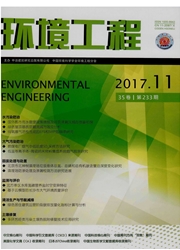

 中文摘要:
中文摘要:
根据2015年1—12月深圳市城区11站点PM_(2.5)小时浓度监测数据,探讨了深圳市PM_(2.5)浓度的时空分布特征。结果显示:监测期间深圳市城区PM_(2.5)平均浓度为29.8μg/m~3,PM_(2.5)平均浓度整体呈现出:冬季〉秋季〉春季〉夏季的特征,PM_(2.5)质量浓度日变化整体呈现出双峰型分布,午后12:00—16:00浓度较低。空间分布上,年均浓度从东南至西北方向依次升高,梯度特征明显。PM_(2.5)浓度与PM_(10)呈高度相关,与SO_2、NO_2、CO呈显著正相关,与O_3呈实相关。相邻城市间空气污染物浓度呈现出一定的相关性,区域污染突出。建立的PM_(2.5)回归统计模型对深圳市2015年PM_(2.5)临近预报的级别准确率在70%以上,能较好地反映PM_(2.5)浓度变化趋势。
 英文摘要:
英文摘要:
The spatial-temporal distribution characteristics of PM2.5 in Shenzhen were investigated based on the hourly PM2.5 monitoring data from Jan to Dec, 2015. And then, a statistical partitioning prediction model of PM2.5 was also established. The average concentration of PM2.5 observed in Shenzhen was about 29.8 μg/m3, and the seasonal variation of PM2.5 concentration were sequenced as follows: winter 〉 autumn 〉 spring 〉 summer. The diurnal distribution of PM2.5 presented a clear bimodal pattern with lower concentration appeared at 12:00--16:00. The average concentration in the southeast was relatively lower, while it was relatively higher in the northwest of the city. We found a strong connection between PM2.5 and PM10. The concentration of PM2.5 was positively correlated with SO2 , NO2 , CO and O3. The concentration of air pollutants in the adjacent cities had a certain relevance, which indicated that regional pollution was serious. Further, the study showed that the established statistical partitioning prediction model could capture the variation of PM2.5 successfully, with air quality forecasting accuracy rates above 70%.
 同期刊论文项目
同期刊论文项目
 同项目期刊论文
同项目期刊论文
 期刊信息
期刊信息
